It’s by moody red light that my suspendered bartender pulls a rocks glass from the shelf. He places a small cube in the glass—not ice, but sugar—which absorbs his few dashes of pale red liquid and transforms it a shade of beauty-school pink. The aroma of licorice is noticeable from where I’m sitting, but not overwhelming, and a splash of water softens the square for muddling. It’s an unnecessary step for bartenders who opt for simple syrup instead, but I have to say, I’m enjoying this theatrical part of the program. It’s a late winter night in Los Angeles, 2017, but given the drink being crafted for me, it could just as easily be early 19th century New Orleans.
The Vieux Carre and the Hurricane both claim origins in the Louisiana capital, but perhaps the most famous cocktail hailing from The Big Easy is the Sazerac. The modern interpretation is a combination of rye, absinthe, Peychaud’s Bitters and sugar (simple syrup or in cube form, depending on who’s behind the stick); and in 2008, the Louisiana state legislature went as far as to anoint it the official drink of the City of Saints.
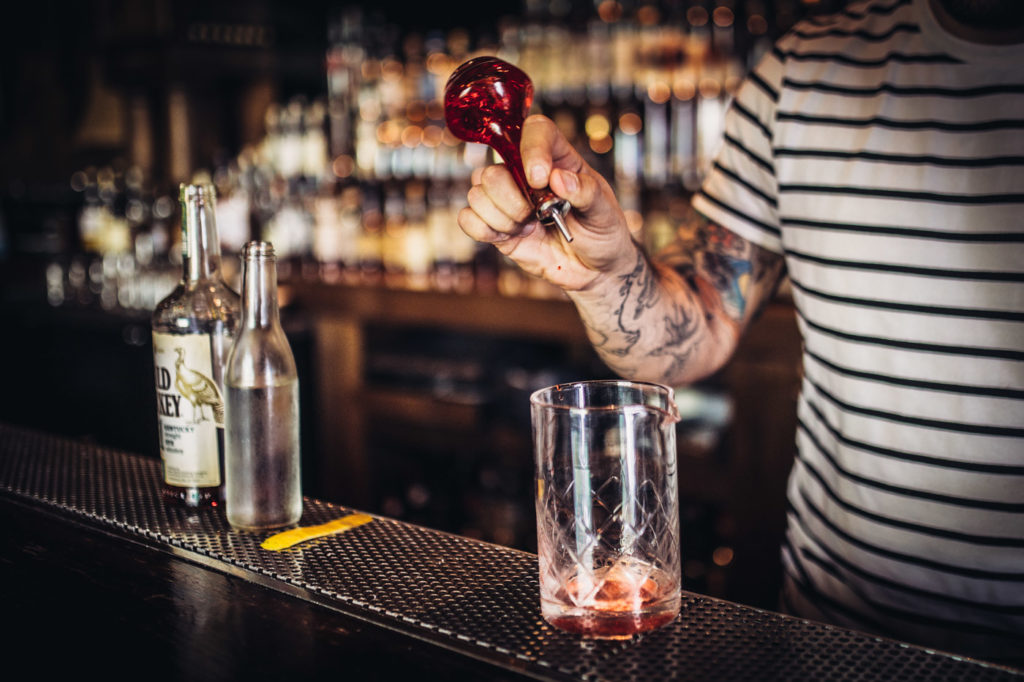
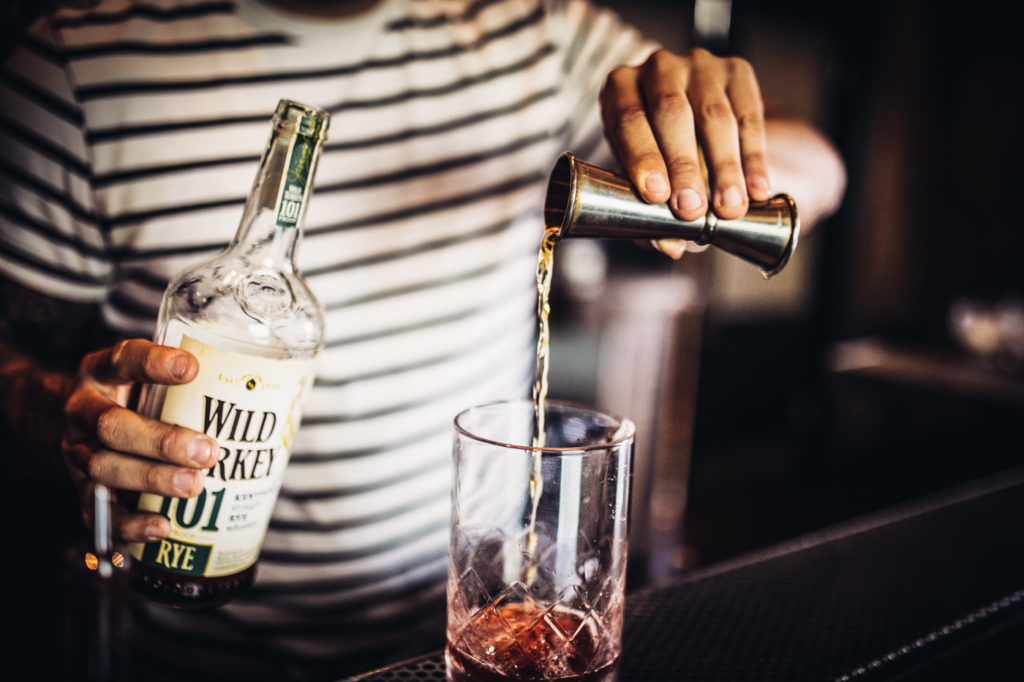
The Sazerac is a sipper with swagger. If the Manhattan is a New York City politico—sophisticated and serious, and the gin martini a playboy with a salty, wry wit, the Sazerac is the wheelin’, dealin’ con man your mother wants you to keep away from. But you can’t help it. He’s too mysterious. He’s too much fun. Floral, herbaceous notes of Peychaud’s captivate, the anise-tinge of once-forbidden absinthe allures, and the stiff brown spirit base spellbinds. He may not be what you take home to mama, but he’ll promise a trip down the rabbit hole in the best possible way.
Regardless of where the drink takes you now, the Sazerac’s origin story is the direct result of a specific time and place in history. Today, the world of alcohol has settled into a romantic and exclusive relationship with the roaring ‘20s. The bathtub gin, the flapper hairdos, the Gatsby-themed parties and the glamorized excess beyond imagination. But what if there was an era even more enviable than the Jazz Age? What if the real ballers were born a century earlier, about 1,000 miles south of Tom Buchanan’s New York City?
That would land us in the port town of New Orleans in the early 19th century, a time that Professor Lawrence M. Powell, Professor Emeritus at Tulane University, says seemed to be “the center of the universe at the time.”
The early 1800s were a time of shifting interests in New Orleans. The city was a collective of identities, thanks to a diverse cultural influence and changing international control. In the latter half of the 18th century, Spain took over the territory from France, and for four subsequent decades, exerted their influence over the population. But in 1803, after a brief repossession by the French under Napoleon, the Louisiana Purchase made the city an official part of the United States. The major port saw an explosion in population in the early 19th century, and the general prosperity and melding of cultures made for a lively atmosphere.
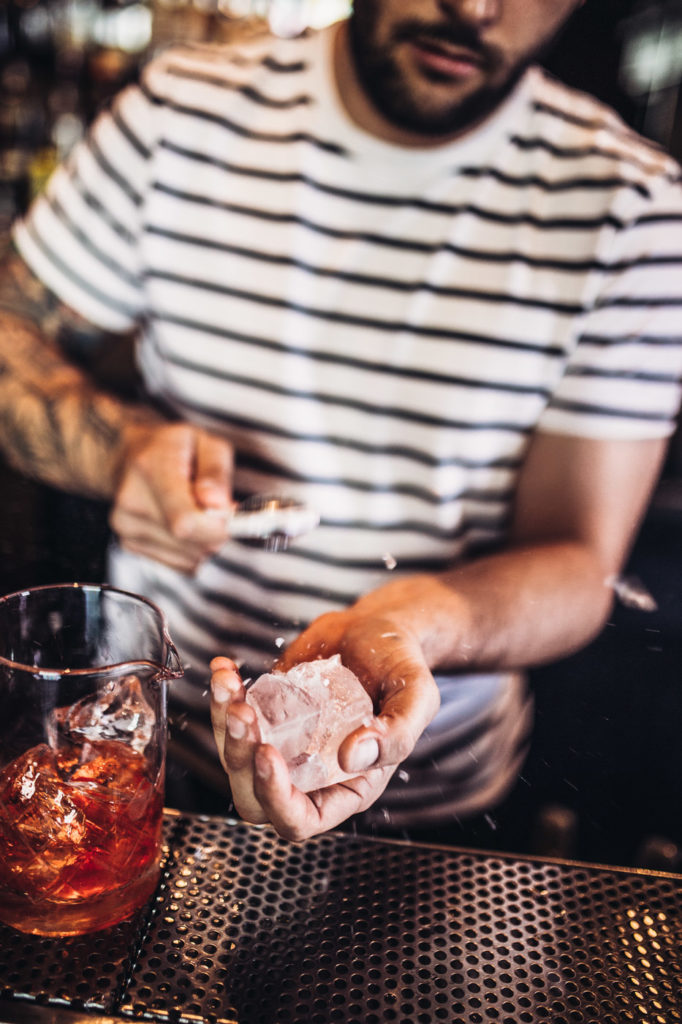
“Things were booming [in the 1820s and ‘30s],” says Powell. “It was a new world of unfettered capitalism. The city became the capital of the cotton trade; slaves were being funneled through to cotton fields. Money was like Silicon Valley, changing hands quickly.”
Particularly in the months of November through May, when new crops came in, the city’s population would grow by a third—a migratory population comprised of “young bachelors and fathers away from their families for six to eight months,” Powell describes. For this itinerant business class, hotels were erected—some of the grandest the country had ever seen. “They were places where business was exchanged,” he continues. “They were chasing money by day and pleasure by night. And they were inventing new ways to sell pleasure.”
The pleasure market was one everyone wanted a piece of, including apothecaries in town. Although they primarily functioned as druggists, Powell suggests they were also “places to sip liquor”—unsurprisingly a favorite pastime of these men far from their families for three-quarters of the year. Legend has it one such apothecary, Antoine Amédée Peychaud, created his own brand of bitters at the time; the namesake fuschia elixir still foundational to the cocktail.
“They were chasing money by day and pleasure by night…”
——
Like most folklore, there’s plenty of debate around the invention of the drink and who is due the credit. Some believe it was Peychaud himself, by mixing his proprietary bitters into an early recipe. Other tales suggest it was a local coffee house owner who didn’t begin serving the drink until the mid-19th century.
Equally influenced by the evolving international landscape of the city was the ingredient list. At the suggested time of its invention, French influence was still strong, thus the wines, cognacs and brandies for which the country was known were a major part of drinking culture. It’s widely believed the Sazerac was invented using cognac (and most likely named for a brand of cognac: Sazerac-de-Forge et Fils). But when a phylloxera blight trounced French vineyards later in the century, the import supply became scarce. Enter rye whiskey: a stiff, brown spirit—one that was American and available. It was a worthy substitute.
And just when it was getting comfortable with its newest ingredient, another upset came to the original recipe when absinthe was outlawed in 1912 thanks to its use of wormwood, a purported hallucinogen. A number of liqueurs with similar flavor profiles were substituted, most notably Herbsaint (an anagram of the word absinthe, save for the letter r), which later made its way onto the market in 1934. Although the ban on absinthe was lifted in 2007, Herbsaint (now produced by the Sazerac Rye company—along with modern-day Peychaud’s Bitters) is still favored by some mixologists.
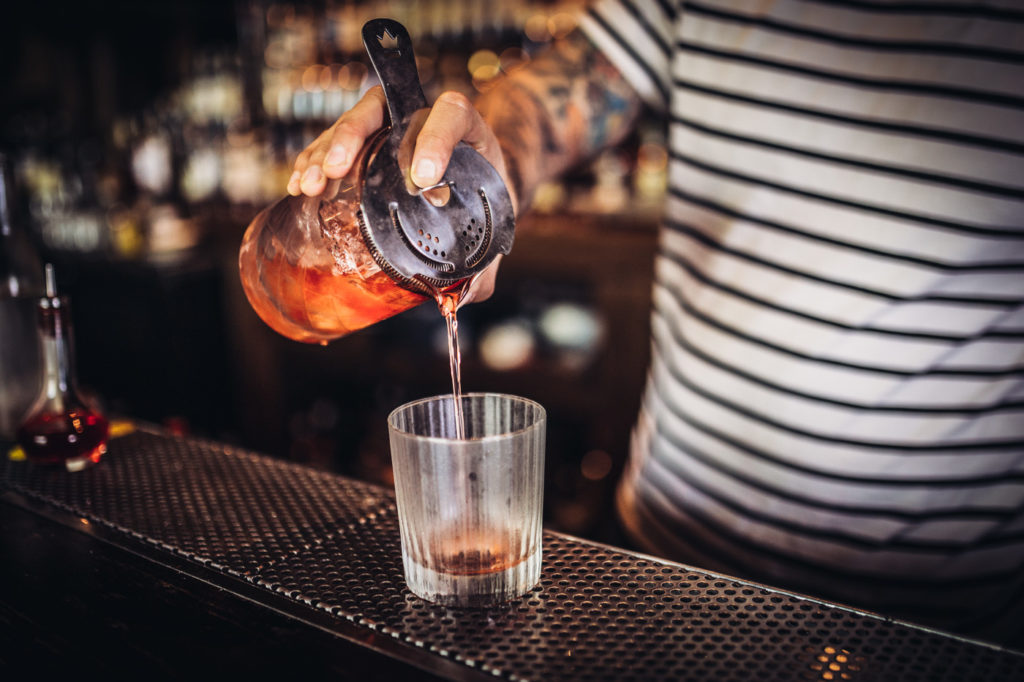
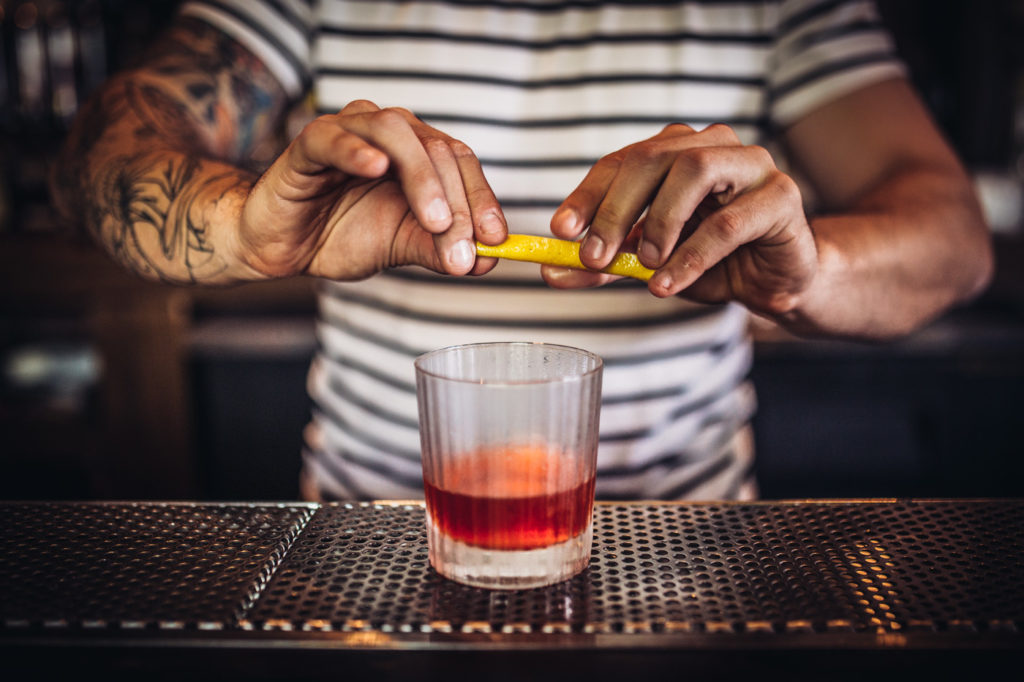
Whichever the spirit of choice, the process is the same: it’s dosed into a glass in a trace amount as a rinse—just enough to impart a hint of herbal aroma and flavor. There may still be a bartender or two out there performing the trick of tossing the glass and twirling midair to achieve that end, but most contemporary barkeeps simply spin in hand—a method that’s probably saved a glass or two in a busy bar.
With its complicated past, there’s much to contemplate beyond the glass. Powell paints a picture of the demographic of New Orlean’s around the time the Sazerac came to life: “There was heavy immigration. It was really a rainbow of people and nationalities.” I think I speak for many a cocktail lover when I thank them for leaving us such a colorful drink.
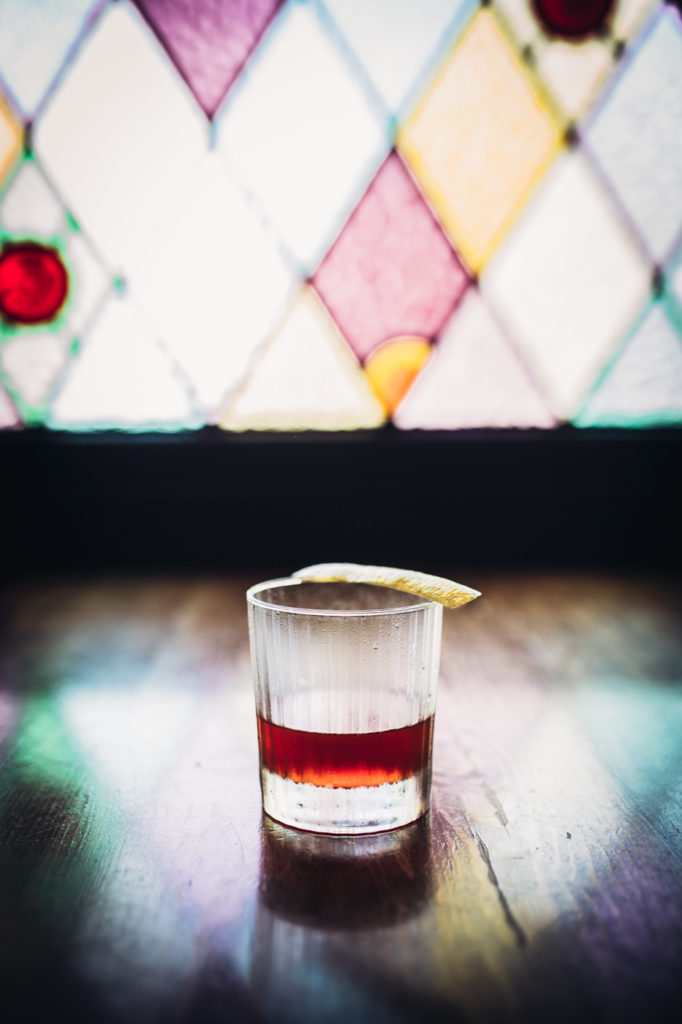
RECIPE
The Sazerac
Ingredients
- 2.25 ounces rye whiskey
- ¼ ounce simple syrup
- 5 dashes Peychaud Bitters
Directions
Combine all ingredients into a mixing glass, add ice and stir. Strain into an absinthe rinsed rocks glass. Express oil of a lemon twist over glass, either rest on the lip of glass or discard.
——
Special thanks to Professor Lawrence M. Powell, Professor Emeritus at Tulane University, Brandyn Tepper and Hatchet Hall in Los Angeles, California.





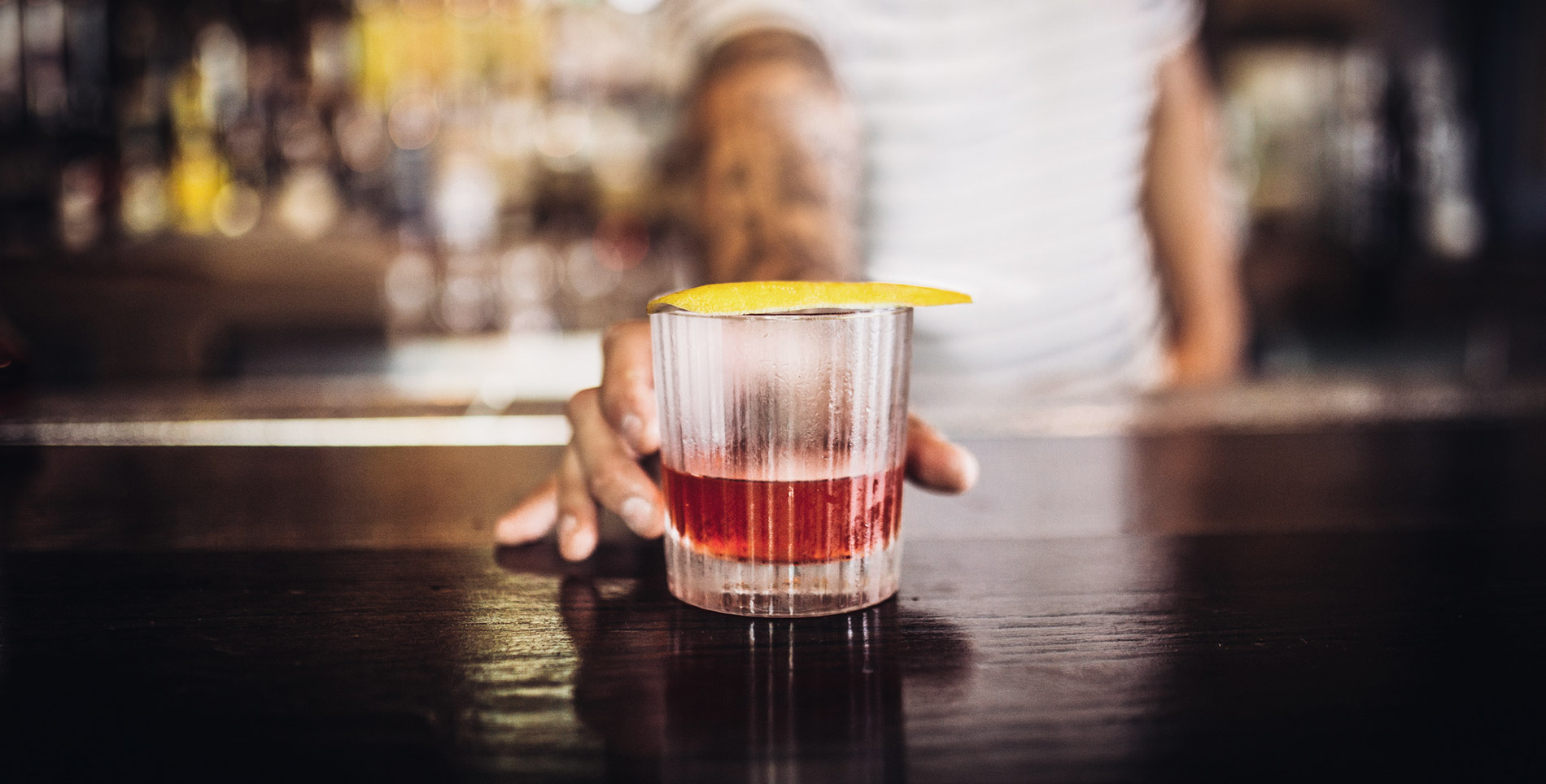

Our comments section is for members only.
Join today to gain exclusive access.